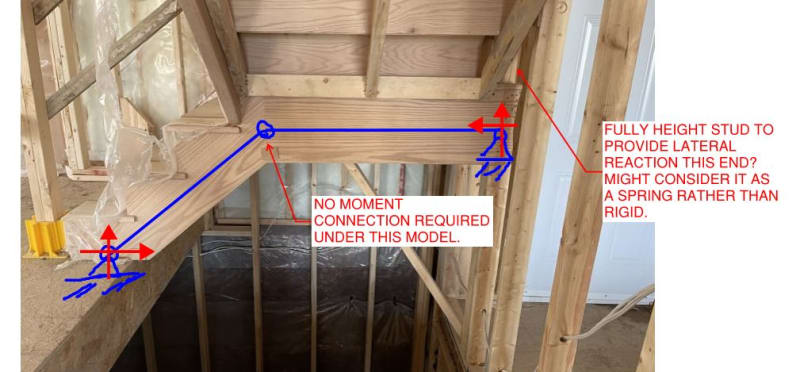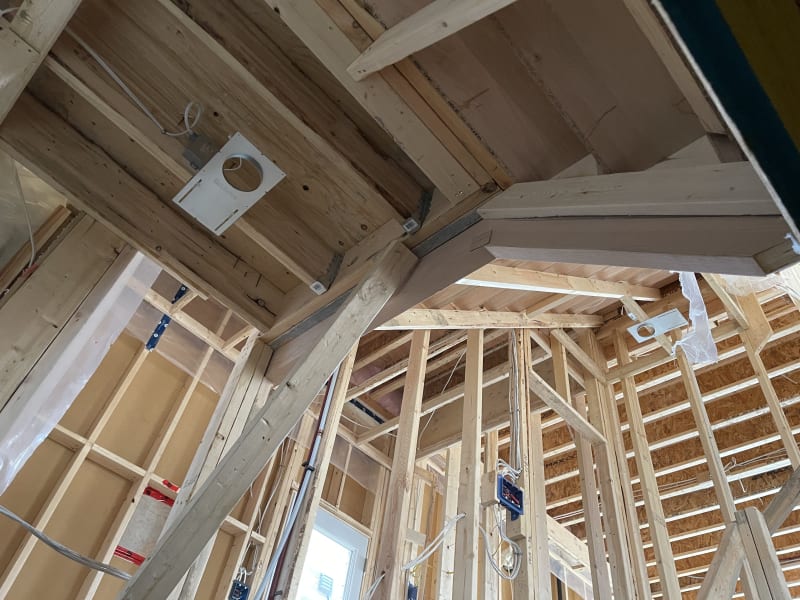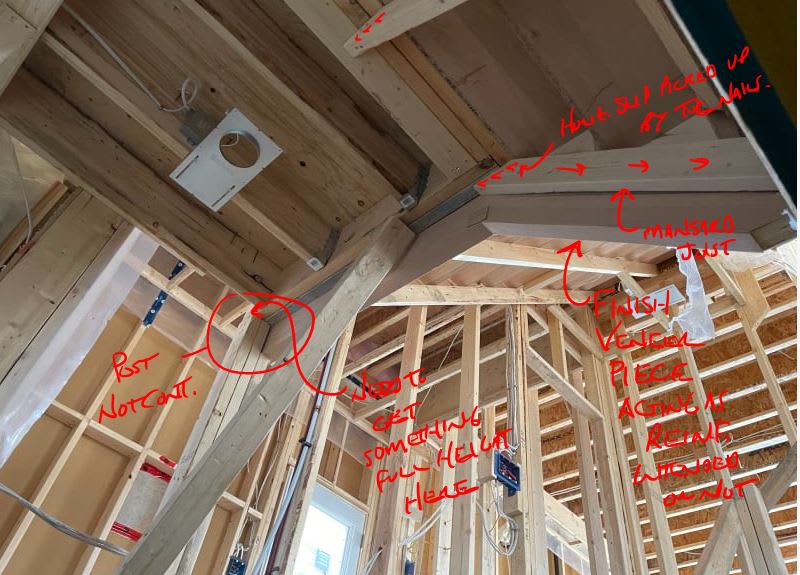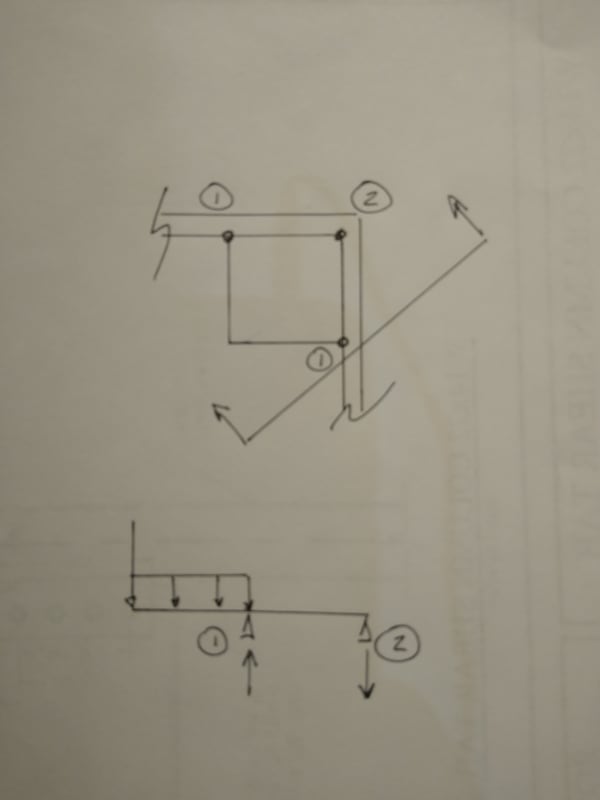Good Morning everyone,
I was called in to examine a stairway installed at a new build home. The stairway landing is supported by load bearing walls on two sides and by a hockey stick type stringer at the bottom. The base of the stairs rests on a double LVLs. I would think that the angled stringer would induce a moment at the edge that would need to be examined ?
Has anyone had experience working with stairs like this and is this sort of arrangement common ? I can see the architectural benefit of creating a large space below the landing on why they did this.
Thanks for all your help.
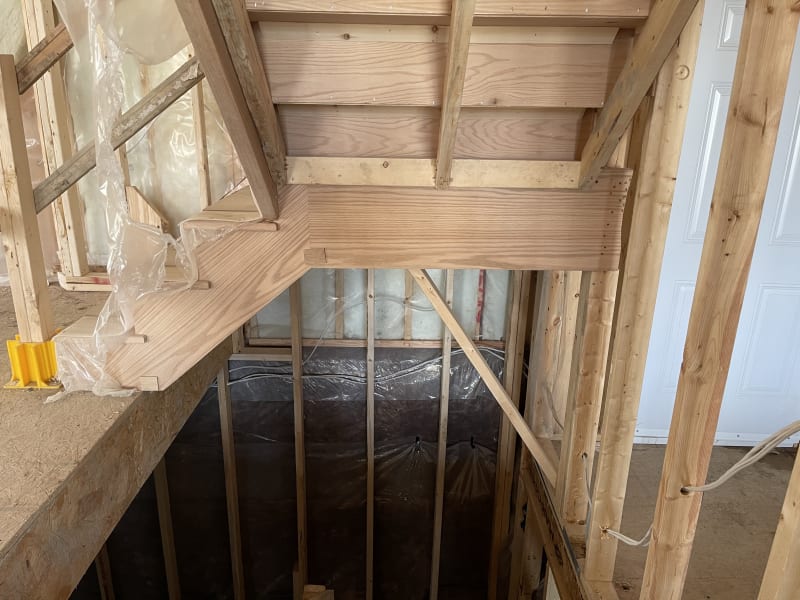
I was called in to examine a stairway installed at a new build home. The stairway landing is supported by load bearing walls on two sides and by a hockey stick type stringer at the bottom. The base of the stairs rests on a double LVLs. I would think that the angled stringer would induce a moment at the edge that would need to be examined ?
Has anyone had experience working with stairs like this and is this sort of arrangement common ? I can see the architectural benefit of creating a large space below the landing on why they did this.
Thanks for all your help.


